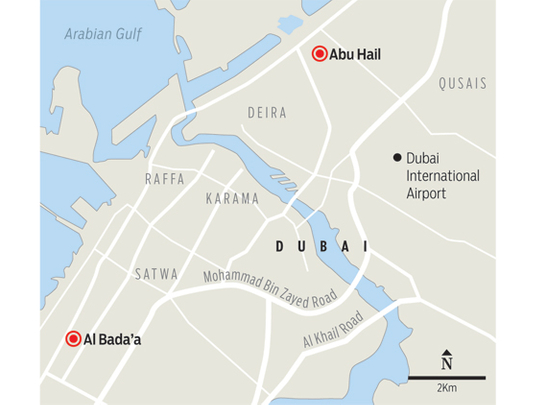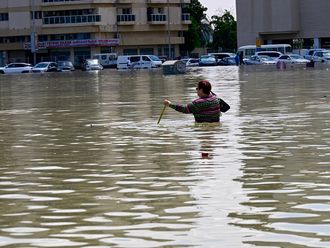
Dubai: The decline in the number of dilapidated buildings not only means there are fewer eyesores in the city, but the level of safety among neighbourhoods has, in turn, been beefed up as well.
Shaikh Hamdan Rin Rashid Al Maktoum, Deputy Ruler of Dubai, Minister of Finance and Chairman of Dubai Municipality, on Thursday approved plans to partially rezone the residential areas of Al Bada’ae in Jumeirah 1 and Abu Hail.
Under this provision, these two areas that were filled with villas can now be reused for commercial purposes, and owners are now authorised to build multi-storey residential buildings.
The plan to rezone villa-only areas will provide a much needed face-lift to the district, as pockets of abandoned and dilapidated buildings can be found there.
According to quarterly reports issued by Dubai Municipality, the number of abandoned buildings has declined by 30 per cent from 202 in January-March 2013 to 141 for the same period in 2014.
“During our inspections, we found that some abandoned and dilapidated buildings harbour absconders, delinquents or is a place where illegal activities and crimes take place. Half-constructed buildings also pose a threat to residents’ safety because it attracts people to hide there, as they are certain that nobody can find out what they are up to,” said Jaber Abdullah, head of buildings inspection department at Dubai Municipality.
He explained that inspectors also found some abandoned buildings were being used as warehouses in addition to manufacturing goods, although he was unable to specify what type of products these were.
The last lot of abandoned buildings was found in Abu Hail, Al Baraha, Al Wuheida, Al Quoz and Hor Al Anz.
Khalid Saleh, director of buildings department, pointed out that if owners repeatedly ignore the civic body’s warnings to demolish the buildings, the municipality will be responsible for carrying out the works and owners will then have to bear the cost as well as an additional 20 per cent cost as administration charges.
To prevent such cases and ensure the safety of the community, he suggested that owners should secure the entrances of the buildings to prevent people from easily moving in, and to regularly carry out maintenance work.
Since the local order was issued against abandoned buildings in 2011, a total of 308 abandoned and dilapidated buildings were recorded, out of which 197 were demolished and 111 were maintained by owners up until May this year.
“Such areas tend to be infested with insects and rodents because they are unkempt and due to the accumulation of waste in the premises, which affects the environment and public health as these pests can enter other nearby homes of residents,” Abdullah said.











